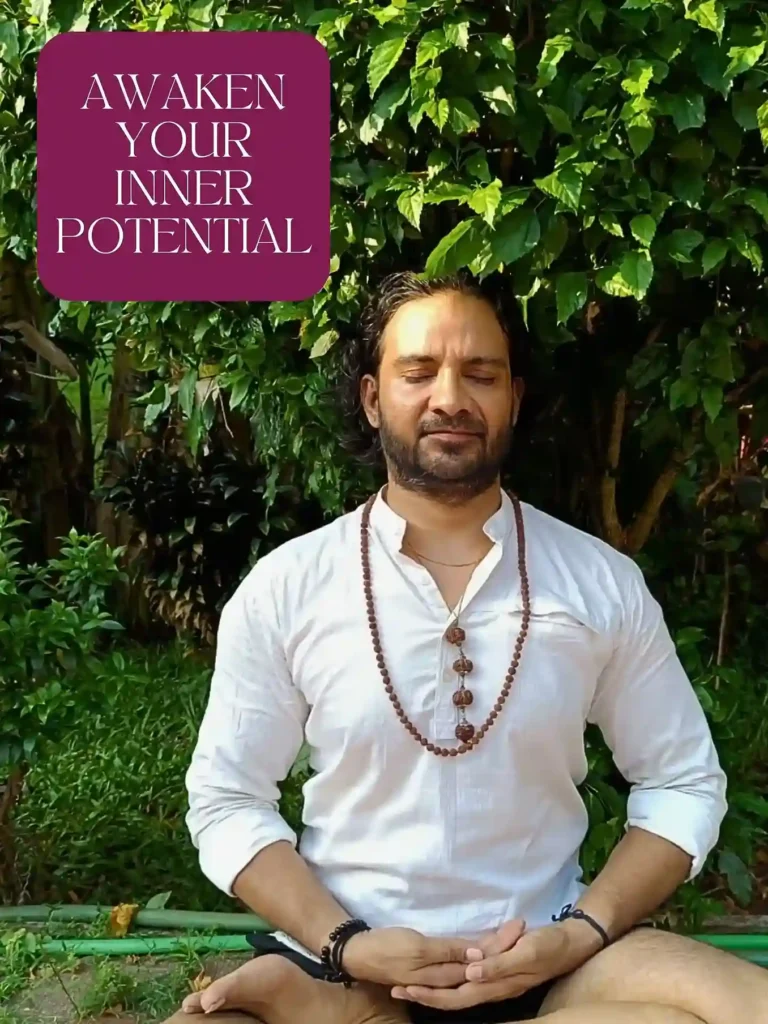Kundalini Yoga: Benefits of Daily Online Practice

Key Takeaways:
- Kundalini Yoga is a comprehensive practice combining physical postures, breath control, meditation, and chanting to awaken inner energy and enhance consciousness.
- Physical Benefits include increased flexibility, strength, cardiovascular health, and a robust immune system.
- Mental Clarity is boosted through improved focus, memory, and cognitive function.
- Emotional Balance is achieved by reducing stress and fostering mindfulness and self-awareness.
- Spiritual Growth is promoted through deeper self-connection and heightened awareness, leading to a more fulfilling life.
Kundalini Yoga, often termed the “Yoga of Awareness,” is a transformative practice that merges physical postures, breath control, meditation, and chanting to activate and harness the vital energy within us. Originating from ancient India, this practice aims to elevate consciousness, improve physical health, and foster emotional balance. For both beginners and experienced practitioners, integrating Kundalini Yoga into daily life can be a profound journey of self-discovery and holistic well-being.
What is Kundalini Yoga?
Kundalini Yoga is distinct in its focus on awakening the latent energy (Kundalini) located at the base of the spine. This energy, visualized as a coiled serpent, is activated and guided through the chakras (energy centers) along the spine, leading to heightened states of consciousness.
Yogi Bhajan, who introduced Kundalini Yoga to the West in the late 1960s, described it as a technology for human consciousness that enables individuals to access their full potential. Unlike other yoga styles that might emphasize physical postures (asanas), Kundalini Yoga integrates a broader range of techniques, including:
- Kriyas: Structured sets of postures, breath exercises, and sounds designed to achieve specific outcomes.
- Pranayama: Breath control practices to enhance and direct life force energy.
- Mantras: Sacred sounds or phrases repeated to focus the mind and vibrate at higher frequencies.
- Meditation: Techniques to calm the mind and connect with inner wisdom.
- Mudras: Hand positions that direct energy flow and reflexes to the brain.
“Unlock the Power Within: Embrace Kundalini Yoga.”
The Benefits of Daily Kundalini Yoga Practice
1. Enhanced Physical Health
Practicing Kundalini Yoga regularly offers a multitude of physical benefits. The dynamic movements and postures improve flexibility, strength, and endurance. Pranayama (breathwork) boosts lung capacity and oxygenates the blood, enhancing overall vitality. Specific kriyas target various bodily systems, such as the digestive, nervous, and endocrine systems, promoting balanced functioning.
Research indicates that yoga, including Kundalini Yoga, can lower blood pressure, alleviate chronic pain, and improve cardiovascular health. The emphasis on breath control and meditation also helps reduce stress hormones, leading to lower inflammation and a stronger immune system.
2. Mental Clarity and Focus
Kundalini Yoga significantly enhances mental clarity and focus. The practice stimulates the brain, particularly the pituitary and pineal glands, which play crucial roles in regulating mood, sleep, and cognitive functions. Meditation and chanting mantras enhance neural connectivity and promote the release of neurotransmitters like serotonin and dopamine, associated with well-being and happiness.
Studies have shown that regular yoga practice can improve attention span, memory, and cognitive flexibility. Kundalini Yoga’s unique blend of meditation and movement helps quiet the mind, reduce anxiety, and foster a state of relaxed alertness.
3. Emotional Balance and Stress Reduction
The holistic approach of Kundalini Yoga promotes emotional well-being by balancing the body’s energy centers (chakras). Practices aimed at the heart chakra (Anahata) can help release pent-up emotions and foster feelings of love and compassion. Breathwork and meditation techniques activate the parasympathetic nervous system, encouraging relaxation and mitigating the impact of stress.
Kundalini Yoga also encourages mindfulness and self-awareness, helping practitioners recognize and manage negative thought patterns and emotions. This increased emotional intelligence can lead to healthier relationships, better decision-making, and a more resilient mindset.
4. Spiritual Growth and Self-Awareness
At its core, Kundalini Yoga is a spiritual practice aimed at elevating consciousness and fostering a deeper connection with oneself and the universe. The awakening of Kundalini energy is associated with profound experiences of inner peace, heightened intuition, and a sense of oneness with all life.
Regular practice encourages self-reflection and inner growth, helping individuals align with their true purpose and values. This spiritual aspect of Kundalini Yoga can lead to a more meaningful and fulfilling life, characterized by a deep sense of purpose and inner joy.
“Experience the Transformation: Daily Kundalini Yoga Practice.”

Getting Started with Kundalini Yoga at Home
For beginners, starting a Kundalini Yoga practice at home can be both exciting and daunting. Here are some tips to help you begin your journey:
Create a Sacred Space: Designate a quiet, comfortable area in your home where you can practice without interruptions. This space should be clean and free from distractions, with enough room to move and stretch comfortably.
Set a Regular Schedule: Consistency is key to reaping the benefits of Kundalini Yoga. Try to practice at the same time each day, even if it’s just for 15-20 minutes initially. Morning practice is often recommended, as it sets a positive tone for the day.
Start with Basic Kriyas and Meditations: Begin with simple kriyas and meditations designed for beginners. You can start with few rounds of Nada and Prana Kriya.
Learn the Mantras and Mudras: Familiarize yourself with common mantras like “So Ham” and ” Om Chanting”. Practicing these with correct pronunciation enhances their vibrational effects. Mudras, such as Gyan Mudra (thumb and index finger touching), can also be incorporated into your practice. Start with khechari and brahmari Pranayamas few times
Focus on Breath and Alignment: Pay attention to your breath and body alignment during each posture and movement. Slow, deep breathing (long deep breathing) and the Breath of Fire (rapid, rhythmic breath) are fundamental techniques in Kundalini Yoga.
Listen to Your Body: Kundalini Yoga can be intense, so it’s essential to listen to your body and avoid pushing yourself too hard. Modify postures as needed and take breaks when necessary.
Expert Teachings and Findings
The transformative effects of Kundalini Yoga are supported by both ancient wisdom and modern scientific research. Yogi Sivanada and Yogananda emphasized that the practice is a science, capable of bringing about measurable changes in the body and mind. Contemporary studies corroborate his teachings, highlighting the benefits of yoga and meditation on mental health, stress reduction, and overall well-being.
For instance, a study published in the Journal of Complementary and Integrative Medicine found that Kundalini Yoga significantly reduced symptoms of anxiety and depression in participants. Another study in the International Journal of Yoga reported improvements in cognitive function and emotional regulation among regular practitioners.
“Awaken Your Inner Potential with Daily Kundalini Yoga Practice.”
Conclusion
Incorporating daily Kundalini Yoga practice into your life can be a transformative journey toward better physical health, mental clarity, emotional balance, and spiritual growth. By awakening and harnessing the powerful energy within, you can achieve a heightened state of awareness and a deeper connection with yourself and the world around you.
